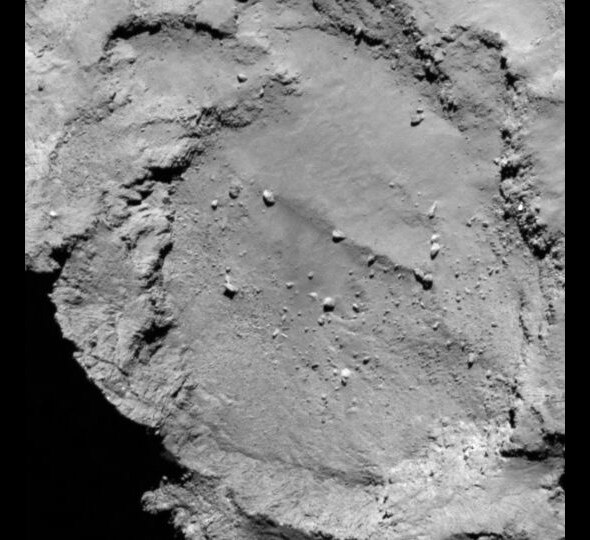Create a free profile to get unlimited access to exclusive videos, sweepstakes, and more!
“Everybody, Remember Where We Parked”: Choosing a Landing Site on a Comet

The Rosetta spacecraft successfully rendezvoused with the comet 67/P Churyumov-Gerasimenko in early August, and has been tagging along with the weirdly-shaped double-lobed dirty iceball ever since. It’s been taking extraordinary pictures and making lots of other measurements, sending them back to the Earth over 400 million kilometers away.
Scientists are poring over the data; not just to study the comet for science, but also to prepare for the next big step in the mission: Setting the lander Philae down on the surface.
Choosing a landing spot is difficult. There needs to be something interesting going on there, since the lander is loaded with scientific instruments that will poke and probe its immediate environment (including drilling down into the surface and analyzing what it finds). But the lander needs to be kept safe, too. That means the terrain (cometain?) needs to be relatively smooth; boulder fields may prove to be somewhat hazardous. But the comet spins once every 12 hours, and lighting conditions can change radically also, affecting the long-term science planning. I expect the surface itself will need to be thought through carefully; the lander will anchor itself using harpoons shot into the ground, so a light fluffy material may not provide the traction needed.
After looking over the images sent back, an initial ten landing potential landing sites have been narrowed down to five. The regions are indicated in the picture at the top of this post (note that the letters are not a ranking; the original ten were just lettered A – J). The OSIRIS camera was used to get better close-ups of the regions for examination. Here’s spot A:
This one is on the bigger of the two lobes, and has the advantage of being a good place to observe the smaller lobe, too. This looks like a place where loose material has flowed down, given how smooth it appears. However, there could still be small depressions of other hazards here, so the examination continues.
Here’s landing spot B:
I’m guessing they won’t go with this one; the presence of so many large boulders means landing could be difficult. But the area above the boulder field does look pretty smooth.
These are images taken at one given time, and more are being taken to investigate the areas under different lighting conditions as the comet rotates. That will highlight things like bumps, pits, and so on, as the shadows change.
The decision will have to be made soon; Philae is scheduled to deploy in November. Rosetta is already dropping down toward the comet; the initial 100-km standoff distance has been lowered to 60 km, and it’ll get closer yet before sending Philae on its way. I’m getting pretty excited by all this! The images and data we’re getting now are already quite amazing, but they’ll get far better as the probe nears the surface.
And then, finally, as Philae heads for the comet, we’ll see what one of these things looks like up close and very personal.


























